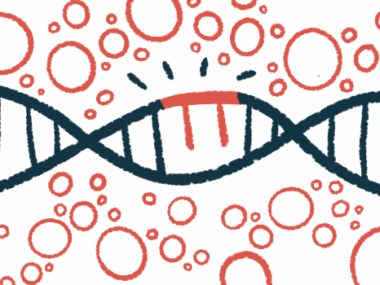Combining Evaluation Tools May Detect Early Signs of SMA: Study
Written by |

Combining two clinical assessment tools helped recognize early neurological signs in infants with spinal muscular atrophy (SMA) who were identified through a newborn screening program, a study suggested.
Even in the absence of obvious clinical signs, infants typically defined as presymptomatic may have minimal signs, such as poor muscle tone, tongue twitches, and weak reflexes.
The study, “Neurological assessment of newborns with spinal muscular atrophy identified through neonatal screening,” was published in the European Journal of Pediatrics.
In SMA, defects in the SMN1 gene lead to a deficiency in the encoded SMN protein, resulting in progressive muscle weakness and atrophy (shrinkage). Disease severity and onset are determined mainly by the number of copies of a second SMN2 gene, which can partly compensate for the loss of SMN1-produced SMN.
Studies have demonstrated that using new disease-modifying therapies in infants before the onset of overt symptoms can dramatically reduce the onset and severity of clinical signs more than when symptoms have already developed.
However, existing tools commonly used to detect SMA in infants may not be suitable for identifying minor neurological signs, highlighting the need for clinical assessments to detect early neurological symptoms.
As part of a pilot study investigating neonatal screening in two large Italian regions, researchers at the Fondazione Policlinico “A. Gemelli” IRCCS in Rome, collaborating with Meyer Children’s Hospital in Florence, developed structured neurological examinations of different aspects of neurological function.
The study included 17 infants who were identified by genetic screening, confirming SMN1 defects and the number of SNM2 copies, and diagnosed before the age of 2 weeks. One infant had one SMN2 copy, nine had two copies, three had three copies, and four had more than three SMN2 copies.
Five infants, all with two SMN2 copies, had overt clinical signs at birth, with four classified as SMA type 1 and the fifth with SMN type 0, because of prenatal symptom onset and lung failure at birth.
The research team performed two structure examinations between three days and 13 days after birth. The first was the Hammersmith Neonatal Neurological Examination (HNNE) — an exam that encompassed 34 items grouped into six categories, including posture and tone, tone patterns, movements, reflexes, abnormal patterns, and orientation and behavior.
The second was a floppy infant module that assessed signs specific to SMA type 1, such as arms rotated inwards, weakness and decreased muscle tone (hypotonia), breathing patterns, together with absent reflexes and fine muscle twitches (fasciculations).
The global HNNE scores were optimal in 12 infants and suboptimal in five. Items more frequently suboptimal across the whole group were posture, leg recoil, reflexes, and ventral suspension, a test to assess the baby’s neck and trunk tone. Regardless of motor signs, behavior was normal in all patients.
The distribution of SMN2 copies between normal and abnormal results with HNNE was significantly different. Babies with three or more SMN2 copies demonstrated more optimal results on the HNNE than those with two or fewer SMN2 copies (66.7% vs. 14.3%). Those with two SMN2 copies showed variable clinical signs, with some infants showing a normal examination while others had obvious severe early signs.
As assessed by the floppy infant module, nine infants had typical results, three had abnormal findings, while the remaining five had more than two abnormal results.
Nine of the 17 infants (53%) had completely normal findings on both the HNNE and floppy module and were considered asymptomatic. Reflexes and fasciculations were more often abnormal in infants who showed one or more suboptimal scores on leg recoil, posture, and/or ventral suspension.
Obvious abnormal neurological signs on HHNE were observed in five infants, with suboptimal scores in most tone and reflex items. The floppy module items of weakness and muscle contractions were abnormal across all patients.
Weakness and breathing patterns allowed the team to identify specific signs of SMA in three of five infants. One of these also showed prenatal onset and signs consistent with SMA type 0, and the remaining two displayed nonspecific neuromuscular symptoms.
“Our results indicate that the combination of the two clinical evaluation tools increases the chance to detect neonatal neurological signs and to define different early patterns of involvement,” the researchers concluded.







